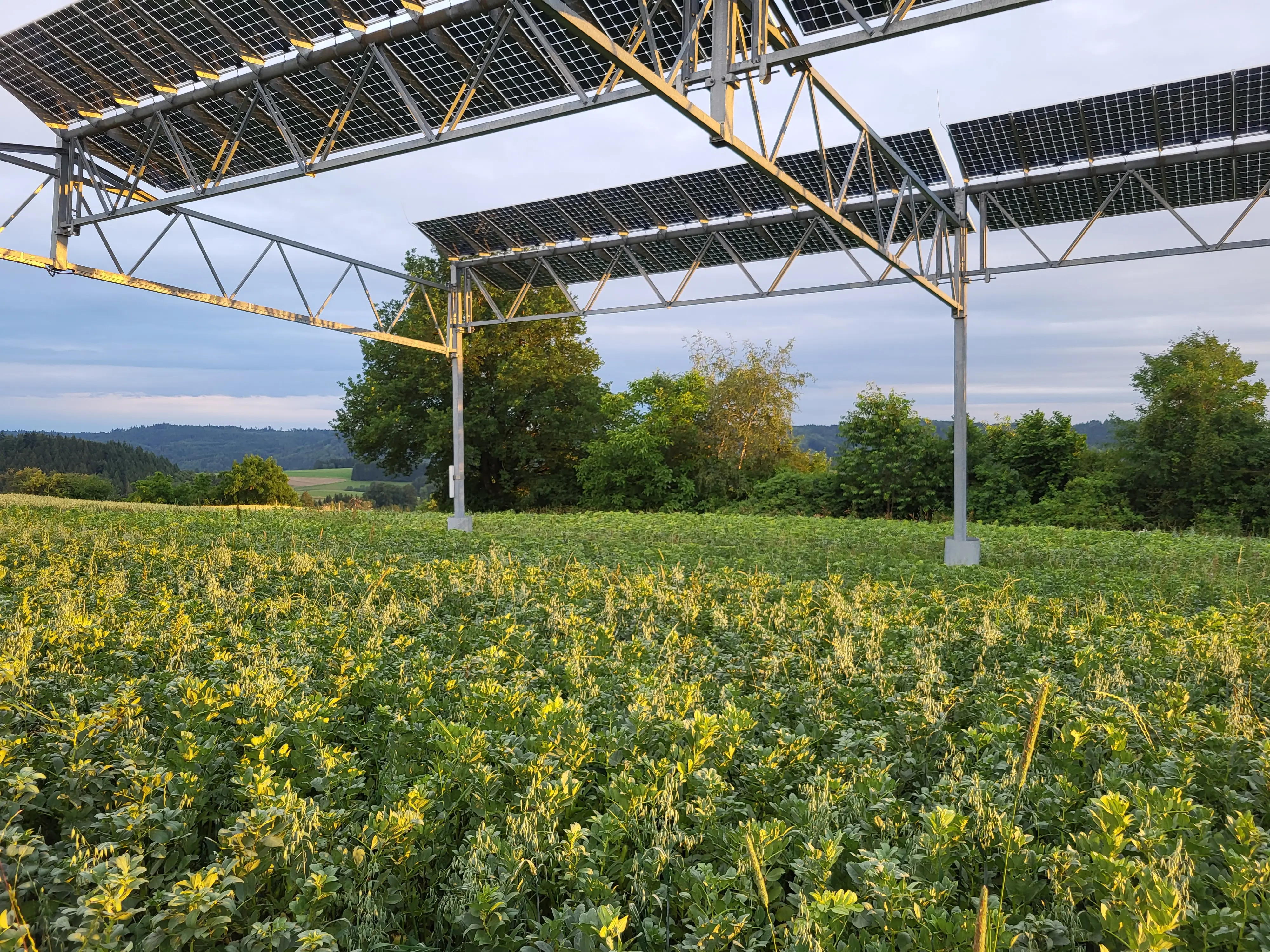Agri photovoltaic could supply five times more electricity than Switzerland needs
The theoretical potential of agrivoltaics in Switzerland is five times greater than the current electricity demand, as ZHAW researchers have determined. The combination with electricity production also offers great opportunities for agriculture to combat climate change and generate additional income from electricity production.

Harvesting grain, fruit or vegetables and producing electricity above or in between: Agrivoltaics refers to the combination of agricultural production with electricity generation using photovoltaics. ZHAW researchers in Wädenswil have now determined the theoretical potential for electricity production with agrivoltaics in Switzerland: This amounts to more than 300 terawatt hours – and is therefore five times as large as Switzerland's current electricity requirements. This was determined as part of the EDGE project, which is funded by the SWEET "SWiss Energy research for the Energy Transition" programme of the Swiss Federal Office of Energy.
Benefits for agriculture
By far the greatest theoretical potential for agrivoltaics is on open arable land (225 terawatt hours per year), followed by grassland and pastureland with 85 terawatt hours per year. The smallest theoretical potential of 13 terawatt hours per year is the combination with permanent crops such as vines, orchards or berry crops. At 6 to 8 cents per kilowatt hour, the production costs of electricity are low. The proportion of electricity generated in winter is even slightly higher than with photovoltaic systems on roofs on the Central Plateau because bifacial modules are used, which can convert the irradiation from both sides into electricity.
Given the lack of practical experience in Switzerland on the benefits of using PV for agricultural production, few restrictions were placed on the type of crops that can be grown on the PV field. The calculated potential therefore represents a maximum theoretical potential, while the practical potential may be much lower. The positive effects on agriculture must be proven before a roll-out of this type of system can be recommended, as current legislation states that agrivoltaics should not weaken or even make agricultural production impossible.
Some studies suggest that, on the contrary, agricultural production should benefit from the combination with photovoltaic systems: If photovoltaic modules are mounted vertically on grass, pasture or arable land, soil erosion and, in hot summers, the evaporation or drying out of crops can be reduced. Grazing animals can find shelter from the heat in the shade of the modules. If the modules are positioned above the agricultural crops, for example above vegetables or vines, the crops can be protected from heavy rainfall and the water can be collected for irrigation in dry weather. In addition, initial trials by the ZHAW show that the infestation of vines with certain fungal diseases decreases, meaning that pesticides can be saved.
Supplement to systems on existing infrastructures
According to Mareike Jäger, lecturer in regenerative agricultural systems at ZHAW, the influences on agricultural production can be very diverse. "With our research, we want to analyse and quantify these influences on Swiss agriculture in more detail. Thanks to the scientifically sound and targeted use of agrivoltaics, meaningful synergies can be utilised."
Agrivoltaics should not be a competitor and certainly not a replacement for photovoltaic systems on roofs, but a sensible addition. "The expansion of photovoltaics in Switzerland has been far too slow so far, which is why we need to build photovoltaic systems in combination with agricultural production and in the Alps in addition to rooftop systems. Utilising even a small part of the theoretical potential is enough to accelerate the expansion. Agriculture can thus make an important contribution to the energy transition and benefit at the same time," adds Jürg Rohrer, lecturer in Renewable Energies at ZHAW.
The research published in this publication was carried out with the support of the Swiss Federal Office of Energy as part of the SWEET consortium EDGE. The authors bear sole responsibility for the conclusions and the results presented in this publication.
Downloads
- Press release "Agri photovoltaic could supply five times more electricity than Switzerland needs"(PDF 213,3 KB)
- Image 1: Theoretical potential for agrivoltaics in Switzerland compared to current electricity production (Source: ZHAW)
- Image 2: Crop of oats and field beans under solar modules, photo: Mareike Jäger, ZHAW
Expert contact
- Prof. Jürg Rohrer, Head Research Group Renewable Energy, Institute of Natural Resources Sciences, ZHAW School of Life Sciences and Facility Management. 058 934 54 33, juerg.rohrer@zhaw.ch
- Mareike Jäger, Head of Research Group Regenerative Agricultural Systems, Institute of Natural Resources Sciences, ZHAW School of Life Sciences and Facility Management. Tel. 058 934 58 95. mareike.jaeger@zhaw.ch
Media contact
- Beatrice Huber, Media Relations, ZHAW School of Life Sciences and Facility Management, 058 934 53 66, beatrice.huber@zhaw.ch